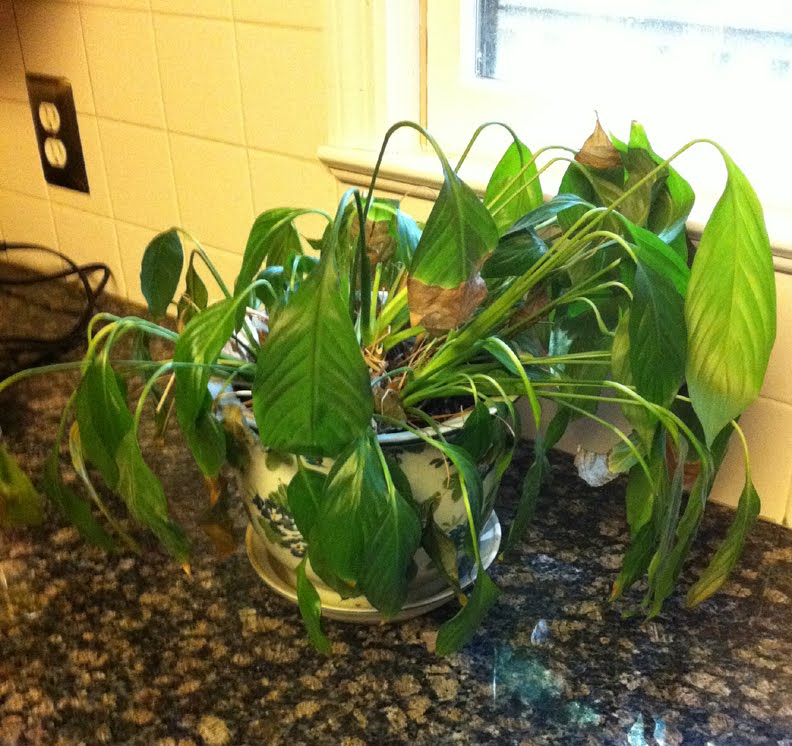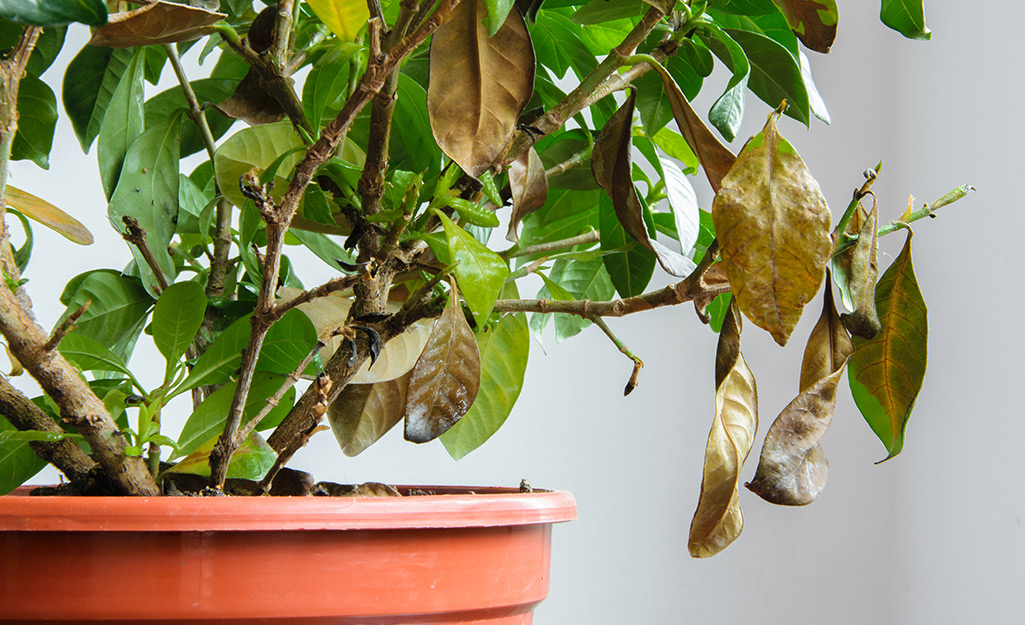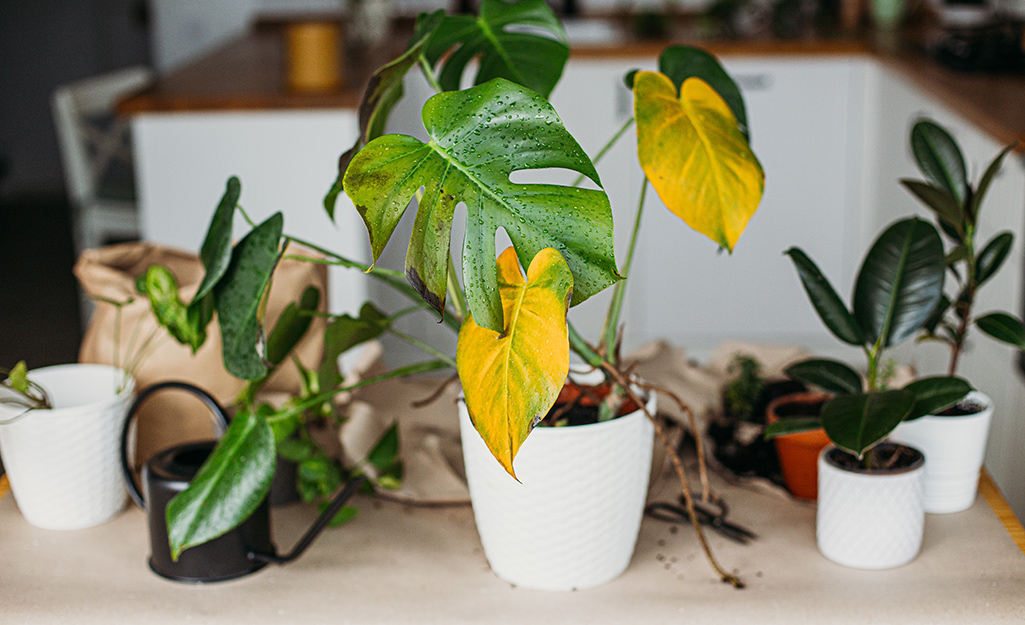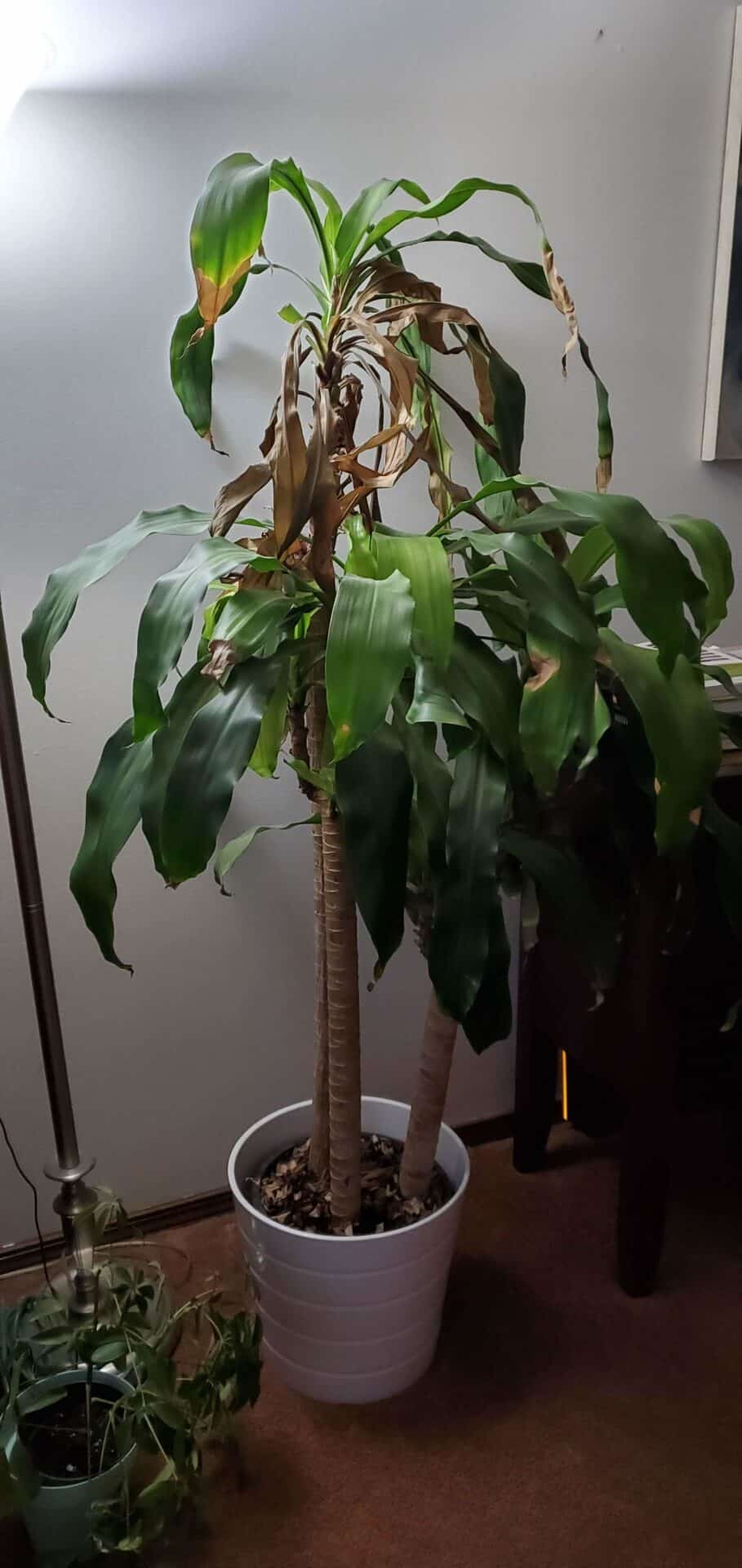If your indoor plant is wilting, yellowing, or losing leaves, it might be dying. Check for root rot or pests.
Indoor plants can bring life and color to any space. Proper care ensures they thrive and flourish. Knowing the signs of a dying plant can help you save it. Common indicators include wilting leaves, discoloration, and stunted growth. These signs often result from overwatering, lack of sunlight, or pest infestations.
Regularly inspect your plant for any changes in appearance or texture. Healthy plants typically have vibrant leaves and firm stems. Proper watering, adequate sunlight, and occasional fertilizing are key to maintaining plant health. Act quickly if you notice any negative changes to revive your plant.
Common Symptoms
Indoor plants can brighten any space. But they need proper care. Noticing signs of distress early is crucial. Here are some common symptoms that your indoor plant might be dying.
Yellowing Leaves
One of the first signs of a problem is yellowing leaves. This can indicate several issues:
- Overwatering or underwatering
- Nutrient deficiency
- Poor lighting
Check the soil moisture first. Too much water can suffocate roots. Too little water causes leaves to dry out. Adjust your watering schedule. Ensure the plant gets enough light. Consider using a fertilizer for extra nutrients.
Drooping Stems
Drooping stems are another red flag. This symptom often points to:
- Watering issues
- Temperature stress
- Pest infestation
Feel the soil. If it’s too wet or too dry, adjust accordingly. Ensure the plant is in a stable environment. Keep it away from drafts or heat sources. Inspect for pests and treat if necessary. Healthy stems should stand upright.
Watering Issues
Watering issues are a common reason why indoor plants die. Knowing the signs of improper watering can save your plants. Let’s explore the symptoms of overwatering and underwatering.
Overwatering Signs
- Yellow leaves: Leaves turn yellow and feel soft.
- Root rot: Roots appear brown and mushy.
- Moldy soil: Mold grows on the surface of the soil.
- Wilting: The plant looks wilted despite wet soil.
Underwatering Signs
- Dry soil: Soil feels dry to the touch.
- Brittle leaves: Leaves become dry and brittle.
- Slow growth: Plant growth slows down significantly.
- Leaf drop: Leaves fall off more than usual.
Soil Problems
Indoor plants can add life to any space. But what if your plant is dying? One common issue is soil problems. Soil problems can hinder your plant’s growth. Let’s explore this further.
Compacted Soil
Compacted soil is a major issue for indoor plants. When soil gets compacted, it becomes hard and dense. This restricts root growth. Roots need space to spread out. Compacted soil can suffocate the roots. They can’t get enough air, water, or nutrients. To check for compacted soil, press it gently. If it feels hard, it’s compacted.
Here are some signs of compacted soil:
- Water pools on the surface
- Roots are visible on the soil surface
- Plant growth is stunted
To fix compacted soil, you can repot the plant. Use fresh, loose soil. This will allow roots to breathe.
Poor Drainage
Poor drainage can also cause problems for indoor plants. When water can’t drain properly, it can lead to root rot. Root rot is a serious condition. It can kill your plant.
Signs of poor drainage include:
- Yellowing leaves
- Mushy or blackened roots
- Foul smell from the soil
To improve drainage, make sure your pot has drainage holes. These holes allow excess water to escape. You can also add a layer of small stones at the bottom of the pot. This helps water drain more easily.
Here’s a quick table summarizing the issues and solutions:
| Issue | Signs | Solutions |
|---|---|---|
| Compacted Soil | Water pooling, visible roots, stunted growth | Repot with fresh, loose soil |
| Poor Drainage | Yellow leaves, mushy roots, foul smell | Ensure drainage holes, add stones |

Credit: www.goodearthplants.com
Light Conditions
Light is crucial for indoor plants. Poor light conditions can cause plant stress. Let’s explore how light affects your plant’s health.
Too Much Light
Too much light can harm your plant. Here are some signs:
- Scorched Leaves: Leaves turn brown or crispy.
- Faded Colors: Bright colors may fade.
- Leaf Dropping: Leaves may fall off.
To prevent this, move your plant to a spot with indirect light.
Insufficient Light
Insufficient light can also harm your plant. Look for these signs:
- Slow Growth: The plant grows very slowly.
- Leggy Stems: Stems stretch and become thin.
- Pale Leaves: Leaves lose their green color.
To fix this, place your plant near a bright window.
Pest Infestations
Dealing with pest infestations is a common challenge for indoor plant owners. Pests can harm your plants, causing them to wilt and die. Recognizing the signs early can save your plant from severe damage.
Common Pests
Several pests commonly attack indoor plants. Here are a few to watch for:
- Aphids: Tiny, green or black insects that cluster on leaves and stems.
- Spider Mites: Minuscule pests that create webbing on leaves.
- Mealybugs: White, cotton-like insects that live in leaf joints.
- Scale Insects: Small, brown or black bumps on stems and leaves.
- Fungus Gnats: Tiny, black flies that hover around the soil.
Damage Indicators
Pests cause various signs of damage. Watch for these indicators:
| Pest | Damage Sign |
|---|---|
| Aphids | Sticky residue (honeydew) on leaves, curled leaves. |
| Spider Mites | Speckled or discolored leaves, fine webbing. |
| Mealybugs | White, cotton-like spots, stunted growth. |
| Scale Insects | Yellowing leaves, sticky residue. |
| Fungus Gnats | Wilting plants, poor growth. |
Early detection of pests can prevent your plant from dying. Inspect your plants regularly and treat any infestations promptly. Using organic insecticides or natural predators can help control pests.

Credit: www.homedepot.com
Nutrient Deficiencies
Nutrient deficiencies can cause your indoor plant to struggle. Plants need proper nutrients to grow and thrive. If your plant lacks essential nutrients, it may show signs of distress. Understanding these signs can help you save your plant.
Yellowing Tips
If your plant has yellowing tips, it might be a sign of nutrient deficiency. Yellow tips often indicate a lack of nitrogen. Nitrogen is essential for healthy leaf growth. You can fix this by using a fertilizer rich in nitrogen.
Another reason for yellowing tips could be a lack of potassium. Potassium helps with water and nutrient movement in plants. Check the nutrient balance in your soil. Use a balanced fertilizer to correct the deficiency.
Slow Growth
Slow growth is another indicator of nutrient deficiencies. Plants need a variety of nutrients to grow. If growth is slow, your plant may lack phosphorus. Phosphorus is important for root development and flower production.
Magnesium deficiency can also cause slow growth. Magnesium is vital for photosynthesis. Ensure your soil has enough magnesium. You can add Epsom salts to the soil to increase magnesium levels.
| Nutrient | Deficiency Sign | Solution |
|---|---|---|
| Nitrogen | Yellowing Tips | Use nitrogen-rich fertilizer |
| Potassium | Yellowing Tips | Balanced fertilizer |
| Phosphorus | Slow Growth | Phosphorus fertilizer |
| Magnesium | Slow Growth | Add Epsom salts |
Temperature Stress
Temperature stress can seriously harm your indoor plants. Extreme temperatures, either too hot or too cold, may cause noticeable damage. This section will help you identify and understand signs of temperature stress in your plants.
Heat Damage
Heat damage occurs when your plant is exposed to high temperatures. Look for these signs:
- Wilting: Leaves and stems lose firmness.
- Leaf Scorching: Brown or yellow spots appear on leaves.
- Dry Soil: Soil becomes extremely dry.
Place your plant in a cooler spot. Avoid direct sunlight. Water your plant regularly. Ensure good air circulation.
Cold Damage
Cold damage can happen if your plant is exposed to low temperatures. Look for these signs:
- Leaf Discoloration: Leaves turn black or dark brown.
- Wilting: Leaves and stems become limp.
- Slowed Growth: Plant growth significantly slows.
Move your plant to a warmer location. Avoid placing it near drafty windows. Use a humidifier if necessary.
| Symptom | Heat Damage | Cold Damage |
|---|---|---|
| Leaf Discoloration | Yellow or brown spots | Black or dark brown leaves |
| Wilting | Yes | Yes |
| Dry Soil | Yes | No |
| Slowed Growth | No | Yes |
Understanding these signs will help you take better care of your indoor plants. Proper temperature control is crucial for their health.

Credit: www.homedepot.com
Reviving Your Plant
Indoor plants can sometimes seem lifeless. But with the right care, you can revive them. The key is to understand their needs. This section will guide you through essential steps to bring your plant back to life.
Pruning Techniques
Pruning helps remove dead or dying parts. This allows the plant to focus energy on healthy growth. Here are some pruning techniques to follow:
- Use sharp scissors or pruning shears.
- Cut back dead stems and leaves.
- Trim any yellowing leaves.
- Remove any flowers that have wilted.
Always make clean cuts just above a leaf node. This encourages new growth. Avoid cutting more than one-third of the plant at a time.
Proper Care Routine
A proper care routine is crucial for plant health. Follow these steps to ensure your plant thrives:
| Care Aspect | Details |
|---|---|
| Watering | Water when the top inch of soil is dry. |
| Light | Place in bright, indirect sunlight. |
| Soil | Use well-draining potting mix. |
| Fertilizing | Feed with balanced fertilizer every month. |
| Humidity | Mist leaves or use a humidifier. |
Follow these guidelines to create the best environment for your plant. Pay attention to your plant’s specific needs. Each type has unique requirements.
Frequently Asked Questions
How To Revive A Dying Indoor Plant?
Revive a dying indoor plant by checking for proper light, watering correctly, pruning dead parts, repotting if needed, and ensuring good drainage. Adjust care based on plant type.
Can A Plant Recover From Dying?
Yes, a plant can recover from dying. Proper care, such as watering, pruning, and adequate sunlight, can help.
Is My Plant Dying Or In Shock?
Check for drooping leaves, discoloration, or stunted growth. These signs indicate stress or shock. Ensure proper watering and light.
How Do You Save A Sick House Plant?
First, identify the problem: overwatering, underwatering, pests, or insufficient light. Adjust care accordingly. Trim dead leaves. Repot if necessary.
Conclusion
Recognizing signs of a dying indoor plant is crucial. Yellow leaves, wilting, and slow growth are key indicators. Act swiftly with proper watering, lighting, and care. Healthy plants enhance your living space and well-being. Stay attentive to your plant’s needs, and you’ll enjoy its beauty for years.

My mission is to help you bring the beauty of nature indoors with expert advice, detailed plant care guides, and creative design ideas.





Leave a Reply